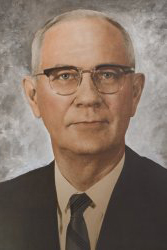
Introduction
No one affected the University of Tennessee at Martin as much as Paul Meek, who served as executive officer, dean, UT vice president, or chancellor from 1934 to 1967.
Early Life and Education
William Paul Meek was born on February 9, 1897, in Martin, Tennessee, to Felix McCrager Meek and Charlotte Temperance Atkinson.
He was educated locally, attended McFerrin College, and planned to attend Vanderbilt University before choosing the University of Tennessee due to a bad harvest.
At UT Knoxville, Meek earned a Bachelor of Science in agriculture and was president of his senior class.
Early Career
After graduating, Meek taught and coached in Harlan, Kentucky, eventually becoming superintendent of the Harlan City School District by 1929.
In 1933, he earned a Master of Science in education from UT Knoxville and became executive officer of the University of Tennessee Junior College in Martin.
Leadership at UT Martin
Upon Meek’s arrival during the Great Depression, enrollment was falling and faculty had been reduced.
His public relations skills doubled enrollment and brought stability to the college.
He initiated a naval air cadet training program during WWII to help sustain the college.
Post-War Expansion
After WWII, the college rapidly expanded, gained degree-granting status in 1951, and was renamed the University of Tennessee, Martin Branch.
Meek helped grow academic programs and oversaw new construction on campus.
In 1962, he was named UT vice president and chancellor of the Martin Branch.
Legacy and Retirement
Meek retired in 1967 after overseeing the campus transition to the University of Tennessee at Martin.
He received honors including a scholarship fund, a dedicated day, and the naming of the university's first library after him.
He passed away on November 2, 1972, and is buried in Martin’s East Side Cemetery.
